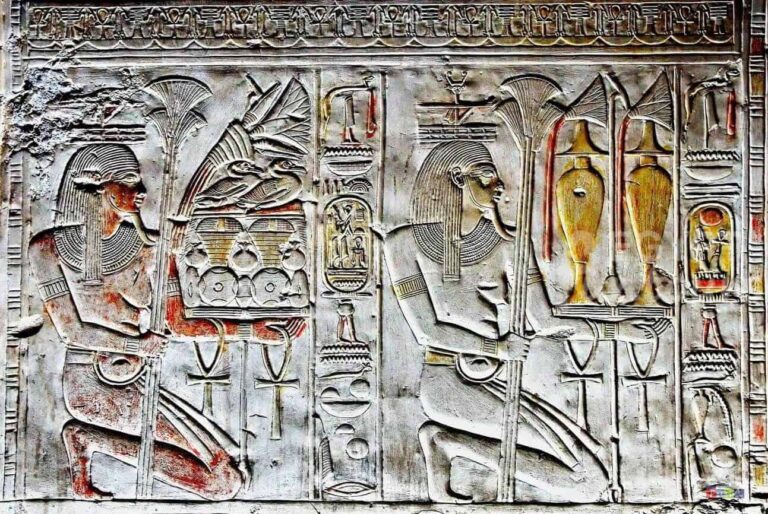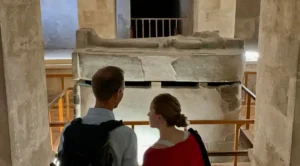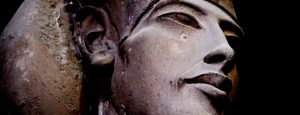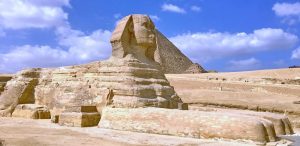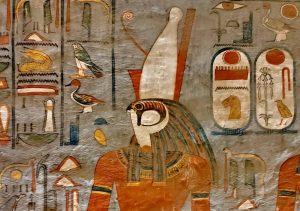Language in ancient Egypt
The ancient Egyptian language is the world’s oldest indigenous tongue, and scholars link it to Berber and other Semitic languages, such as Arabic, Amharic, and Hebrew. It is a branch of the Afro-Asiatic languages. Along with Sumerian, it is one of the oldest documented languages. The Egyptians used it in the form of demotics until the 17th century, when they used it in the form of Coptic during the Middle Ages.
Its oldest known records date back to the mid-3rd millennium BC during the ancient kingdom of Egypt in 3400 BC. Hieroglyphs, which became the official writing system, were used to accompany the language. Egyptian Arabic, which took over following the Muslim conquest in the 7th century, has become the country’s official language. Check out the Ancient Egyptian Alphabet.
Egyptian Language Classification
The ancient Egyptian language’s transformational history may be split into six key historical sections:
Egyptian archaic (Before 2600 BCE)
It is the early dynastic and late predynastic period’s reconstructed language. Numerous works of art, like Naqada II ceramic vessels, also contain the first evidence of Egyptian hieroglyphic inscriptions.
Old Egyptian Language (2600–2000 BCE)
The ancient Egyptians used it to produce the pyramid texts, the largest number of publications written in this language. They intended these texts to exhibit autobiographical writings portraying old Egyptians. It became the official language of the Old Kingdom and the First Intermediate Period. The language uses three ideograms, phonograms, and determinatives to denote the plural.
Middle Egyptian Language (2000–1300 BCE)
The Ancient Egyptian language was named Classical Egyptian because the Egyptians used it to create a wide range of textual writings in hieroglyphics and hieratic scripts. They created mortuary texts, such as coffin texts, and wisdom texts that serve as a guide on how to live a life that represents the ancient Egyptian metaphysical vision of the world. They also used it to chronicle the adventures of particular individuals, write medicinal and scientific documents like the Edwin Smith papyrus, and compose poems about ancient Egyptian gods and rulers. Because the language was so powerful and widely spoken, the Egyptian dialect began to alter to resemble the classical Middle Egyptian dialect. The grammatical structure of this language is quite similar to that of the former kingdom’s language.
Late Egyptian language (1300–700 BCE)
This language first arose in Egypt’s new kingdom, which is regarded as the apex of ancient Egyptian civilization. During this time, it had many rich spiritual passages and secular poetry, as well as many classicisms that emerged in historical and literary works. The gap between intermediate and ancient languages is much larger than the gap between middle and new languages. It also serves as an excellent example of spoken language. The hieroglyphic orthography also resulted in a huge increase in its graphemic inventory.
Demotic Language (600 BC – 400 AD)
It is a name from the Late and Ptolemaic periods of ancient Egypt’s vernacular. It has been in use for about 1000 years. The name demotic is derived from the hieratic (writing system) employed in the delta’s northern forms. During its existence, it went through three stages:
The Early Demotic Language
The Egyptians wrote the majority of the writings between the 26th dynasty and the Persian period, forming the language in Lower Egypt between 650 and 400 BC. They employed the demotic language for administrative, legal, and commercial procedures and writings.
The Middle Demotic Language (400-30 BC)
The Egyptians widely employed this writing phase for literary and religious writings. By the end of the third century, the government used Greek as the country’s official language.
Late Roman Demotic Language
Writings, holy books, mummies, and graffiti-like those on the temple walls of Goddess Isis on Philae that you can visit during your journeys to Egypt-in Greek started to fade, but there are a number of written works from the first and second centuries AD, but unfortunately, most of the demotic texts decreased after the rise of Greek.
Coptic Language
The Coptic language is the last descendant of ancient Egyptian. It represents the culmination of a transition. People can write the language with hieroglyphics and demotic scripts. However, Greek heavily influenced the Coptic alphabet. Coptic was the official language from 200 AD to 1100 AD. People last spoke it in the 17th century. Today, it survives as a liturgical language. European scholars learned it from native speakers during the Renaissance. The Coptic Orthodox Church uses it. Egypt has taken cultural change to new heights. Cities like Cairo, Alexandria, Luxor, and Aswan offer a chance to see true wonder and magic. To make your experience more memorable, take a Nile river cruise with our Egypt tour packages.

